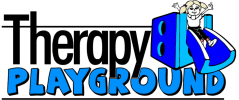Verbal and Visual Cues for Childhood Daily Activities
Misty and Julieanne discuss difficulties children may have transitioning and the behaviors that result from those difficulties, and some things we can do to help eliminate those behaviors or decrease them. Misty is a CBRS Play Therapist at Therapy Playground, and deals with behaviors children have on a daily basis, as well as fine motor and speaking.
Some of the behavior issues Misty deals with are children who are stubborn, cry, whine, an overall temper tantrum during therapy, they’ll want to do a free-play instead of a structured-play, or want to color, play with the shape-sorter, and may not want to transition to a puzzle or flashcard. As a therapist you hear parents mention they have a hard time when they go to the pool, or dinner, shopping, getting the child in and out of the car.
Some things to do during therapy to help transition more smoothly is verbal cueing, talking about what is going to happen, what is happening, just talking to them during the activity. Most children excel knowing what to expect. Also you can offer them choices, such as asking the child which toy do they want to play with? This allows the child to feel as if they are in control, and usually this gives you a better result.
Parents can also use visual cueing with pictures, which can help transition from one activity to the next. You can make a visual schedule so the child learns the routine of what is coming next.
For example if you’re at the pool, you could say “after this last splash we’re going to get out, get dried off, and go to lunch.” When the child dries off you’d say “great job drying off, now we’re going to get lunch.” This is better than just dragging the child around and trying to force them to do what you want. Giving the child the time to cope with the transition helps them really think about what is happening next.
This example will not work every time, but working on one activity at a time can help the child adjust and not be overwhelmed. Giving the child cues before a change occurs as well as during the change helps the child adjust.
Creating structured schedule in the home can help, such as the child knowing every day after the bath it is time for bed. Some children that have trouble processing verbal queues may benefit from pictures, such as a picture of the bath or bed. These suggestions can be used at their school as well.
